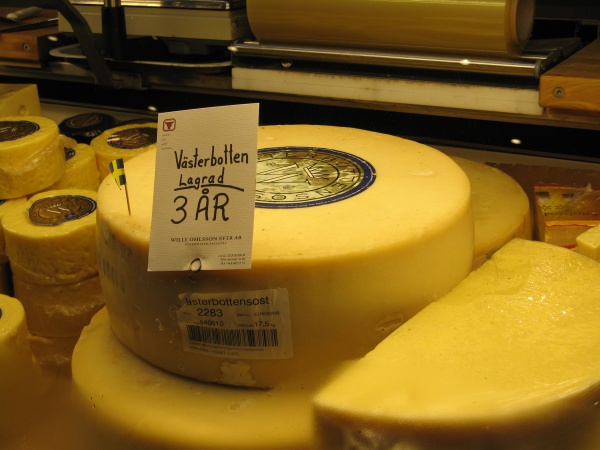Facts About Västerbotten cheese
Västerbotten cheese, originating from the Västerbotten region of Sweden, boasts a fascinating history and a unique flavor that has solidified its esteemed status in Swedish cuisine. This exceptional cheese was said to have been created in the 1870s in the village of Burträsk by a dairy maid named Ulrika Eleonora Lindström.
Västerbotten cheese is a hard, cow's milk cheese, distinguished by its small holes and firm, granular texture. Its production process closely resembles that of Cheddar cheese, involving heating, cutting, and stirring the curd before molding and aging. The cheese features a robust flavor profile, often compared to Parmesan, with salty and slightly bitter notes that set it apart. It has a light yellow hue and contains 31% fat.
Often referred to as the "king of cheese" by Swedes, Västerbotten cheese enjoys immense popularity, frequently outpacing its limited availability, which results in a higher price point compared to other aged cheeses. To develop its quintessential taste, the cheese must be aged for at least 12 months, though 14 months is more typical.
In Sweden, Västerbotten cheese is a staple at late summer crayfish parties and pairs beautifully with pickled herring. One of the most beloved dishes featuring this cheese is Västerbotten cheese pie (västerbottensostpaj), a fixture during celebrations such as Christmas, Easter, Midsummer, and crayfish season in August. This savory pie, made with Västerbotten cheese, cream, and eggs, holds a cherished place in Swedish culinary traditions.

 Norway
Norway